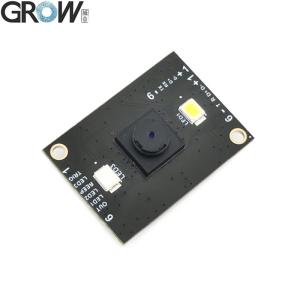
Description
1. USB wired barcode scanner to capture 1D, 2D code on labels,
paper, mobile phone or computer.
2. High-efficiency recognization and high upload speed for
improving your working efficiency.
3. With buzzer for reminding you that the scanning successfully or
not.
4. Compatible with USB and UART interface.
5. Over 180 configurable options
6. Macro support replace a string in the bar code with another
7. Programmable preamble postamble and termination strings
8.Superior reading performance utilizing advanced decoding
algorithmsSpecifications
·Decoding Ability:
1D: EAN- 8,EAN-13,UPC-A,UPC-E,Code 39,Code 93,Code
128,EAN128,Codebar,industrial 2 of 5,Interleave 2 of 5,Matrix 2 of
5,MSI,postal code ect.
2D: PDF417,QR Code ,Data Matrix ect.
·Resolution: 0.10mm (4mil)
·Reading Distance :25 - 250mm
·Interfaces: USB2.0 UART
·Operating Voltage :5V
·Operating Current :120mA·Type of Illuminant: 617nm LED(Aimer), 6500K LEDs(Illumination)
·Scan Angle: Roll:0-360°, Pitch:±65°or greater, Yaw:±60°or greater
·Scanning angle Inclination angle: 34°, Elevation angle 26° Print
Contrast 30% minimum reflective difference
·LED Indicator:Buzzer and bi-color light: Red-power, Blue-decoding
Successfully
·Operating Temperature:-20 degrees to 55 degrees
·Storage Temperature:-40 degrees to 65 degrees
·Temperature Humidity:5% to 95% Relative humidity, Non-condensing
·Light Levels:0-85000LUX
Files
·Provide User ManualQR code scanner suitable for production lines
In modern industrial manufacturing processes, QR code readers play
a crucial role, promoting the improvement of production efficiency
and management effectiveness through rapid and accurate data
capture. However, in the crowded market of QR code readers,
selecting suitable equipment for the production line is not an easy
task.
The primary consideration is the specific environmental conditions
of the production line. Production lines are often challenging
places that may encounter various adverse factors such as dust,
grease, high temperatures, and vibrations. Therefore, it is crucial
to choose a QR code reader with excellent protection performance.
For example, readers with dust-proof, waterproof, drop resistant,
and high-temperature resistant characteristics can operate stably
in harsh environments, effectively reducing the occurrence of
failures and maintenance costs.
Secondly, reading performance is the determining factor. The
production line has a tight pace, requiring the reader to quickly
and accurately scan the QR code. The parameters such as scanning
speed, scanning range, and scanning angle directly affect work
efficiency. A high-performance QR code reader should have the
ability to quickly process a large number of QR codes and maintain
excellent reading performance at different distances and angles.
Furthermore, communication mode and interface are also important
considerations. With the advancement of industrial automation,
production line equipment needs to achieve real-time data exchange
with enterprise information systems. Therefore, QR code readers
should support diverse communication protocols and interfaces to
ensure smooth connections with other devices and systems, enabling
instant data transmission and sharing.
In addition, stability and ease of maintenance are equally crucial.
The production line runs for a long time and requires extremely
high stability of the equipment. Choosing a reliable and low
failure rate QR code reader can reduce the risk of production
interruption. Meanwhile, readers that are easy to maintain and
repair can help reduce maintenance costs and shorten downtime.
In practical selection, a comprehensive evaluation should also be
conducted based on the specific needs and application scenarios of
the production line. For example, if the production line needs to
scan high-density QR codes, a reader with high resolution and
powerful decoding capabilities needs to be selected; If the
production line space is limited, readers with small size and easy
installation should be selected.
In summary, selecting a suitable QR code reader for the production
line requires comprehensive consideration of various factors such
as environmental adaptability, reading performance, communication
mode, stability, and ease of maintenance. Only in this way can we
ensure that the QR code reader plays its best role in the
production line, provide solid support for the production
management of enterprises, improve production efficiency and
quality, and enhance the market competitiveness of enterprises.



















